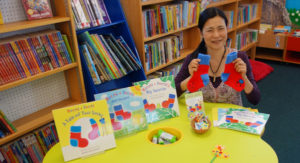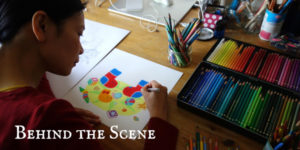Have you ever heard the story of a thousand cranes? In Japan, the crane is considered a sacred bird. It is believed that folding a thousand paper cranes can grant a person the opportunity to make a special wish come true.
Recently, I had the opportunity to visit the Oriental Museum, where the exhibition “Remembering Hiroshima and Nagasaki” was on display. Amidst the exhibits, tiny origami cranes encased in resin caught my eye. These delicate origami cranes were folded by a young girl named Sadako.
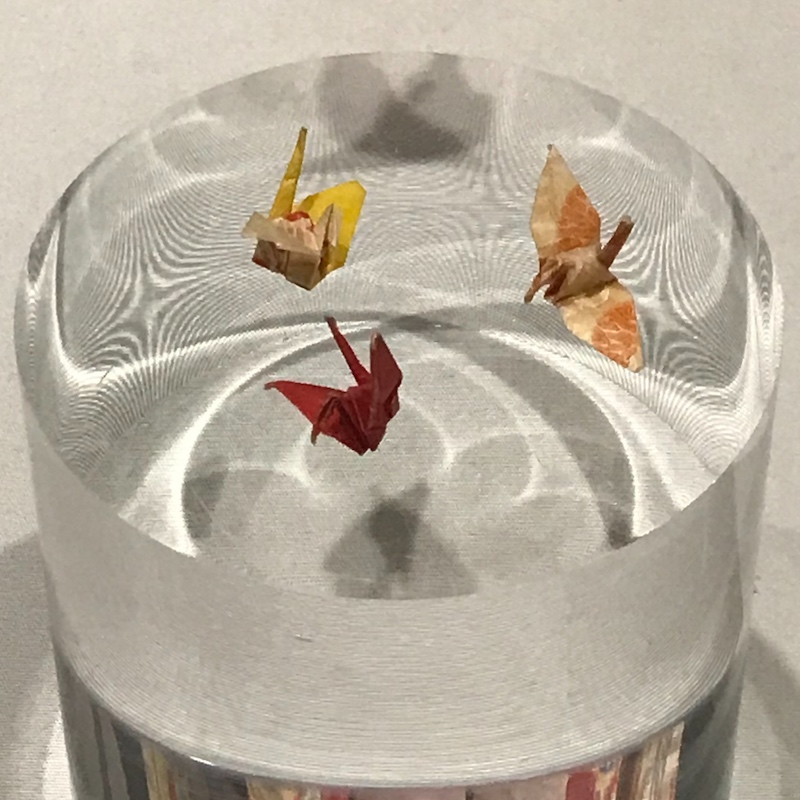
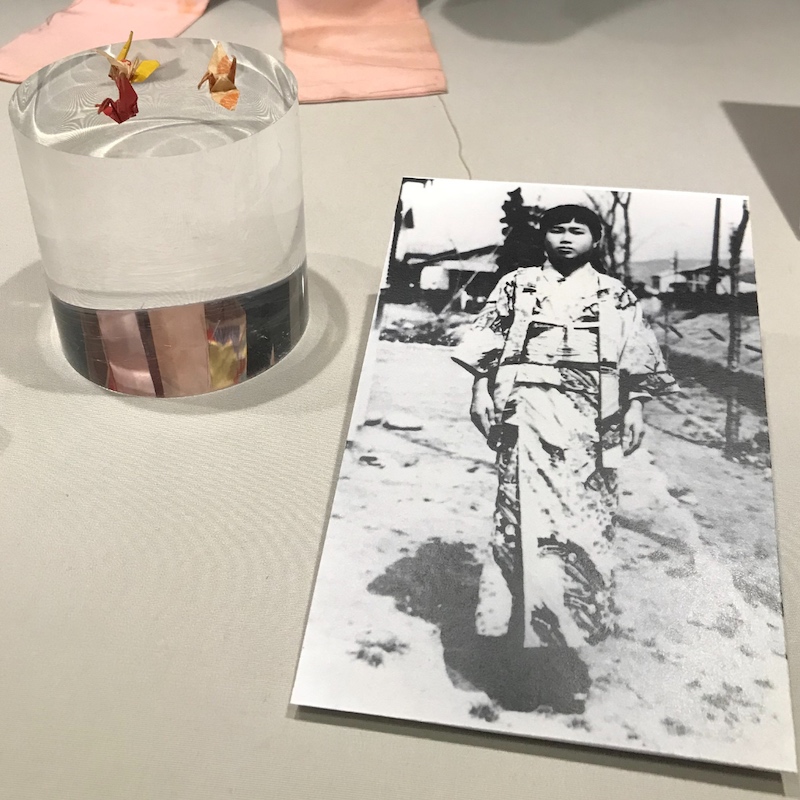
Sadako was exposed to the radiation of the atomic bomb dropped on Hiroshima when she was just two years old. A decade after the bombing, she suddenly contracted leukemia. She continuously folded paper cranes, hoping they would help her recover. However, when she saw the other children in her ward were dying, she realised that she might not survive. Her wish shifted to yearning for world peace and an end to suffering.
It is said that Sadako folded 644 cranes before she died. Her classmates continued folding cranes in honour of their friend. She was buried with a wreath of 1000 cranes to honour her dream.
I read Sadako’s story as a child and learned that the paper crane became a symbol of peace because of her.
When the Oriental Museum approached me to host a Chigiri-e workshop centred around the themes of ‘peace’ and ‘hope,’ I decided to create a Chigiri-e piece inspired by Sadako’s paper cranes.
Here’s the process of creating the Chigiri-e crane.
🔹🔷🔹🔷🔹🔷🔹
The works below are from the Chigiri-e workshop at the Oriental Museum. Aren’t they amazing?
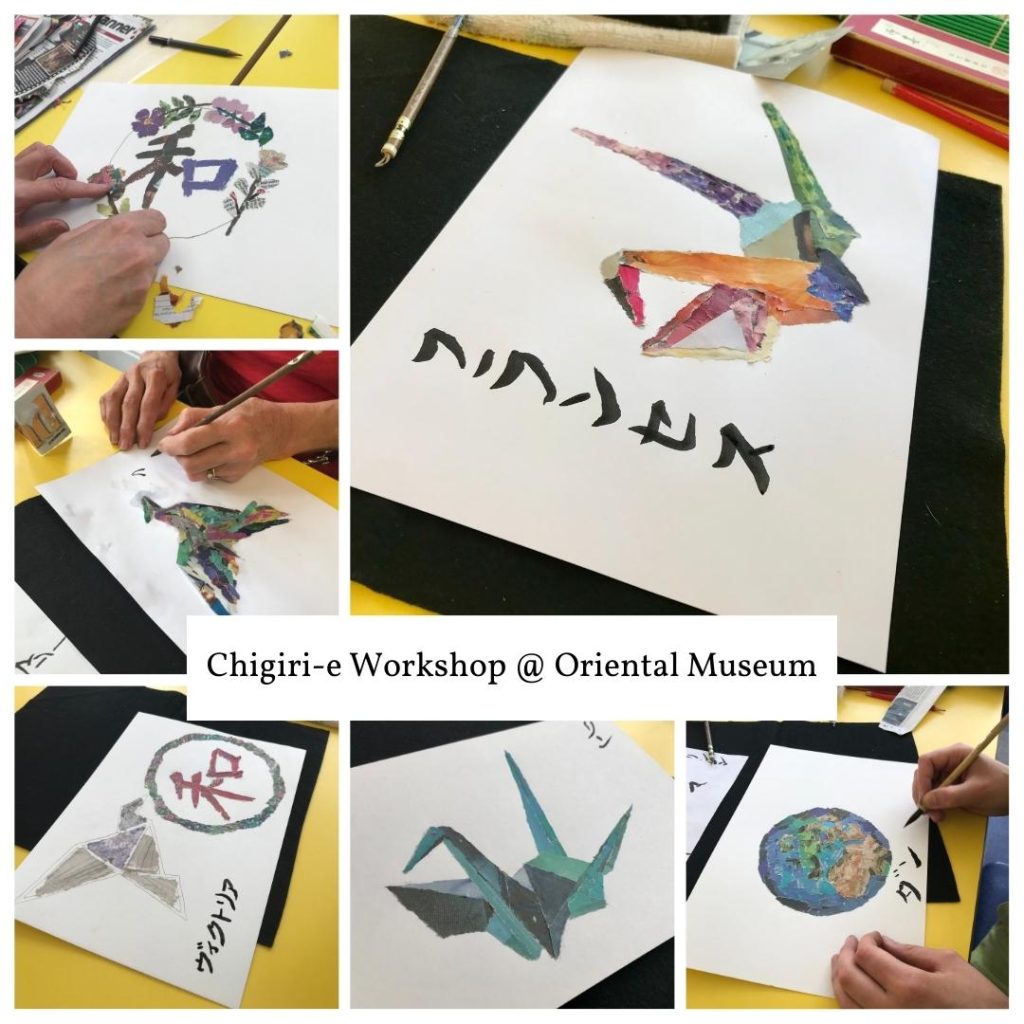
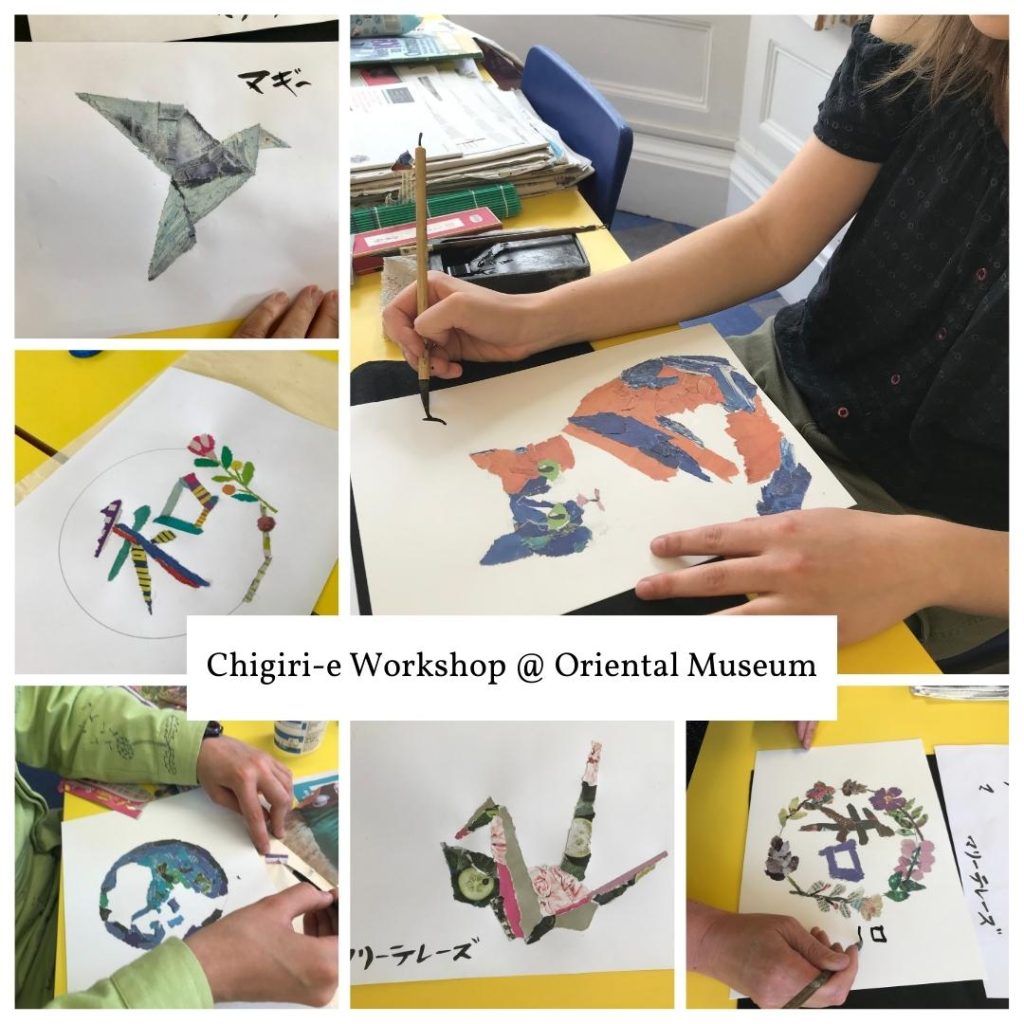
🔹🔷🔹🔷🔹🔷🔹
My Chigiri-e greeting cards are available in my online shop.



